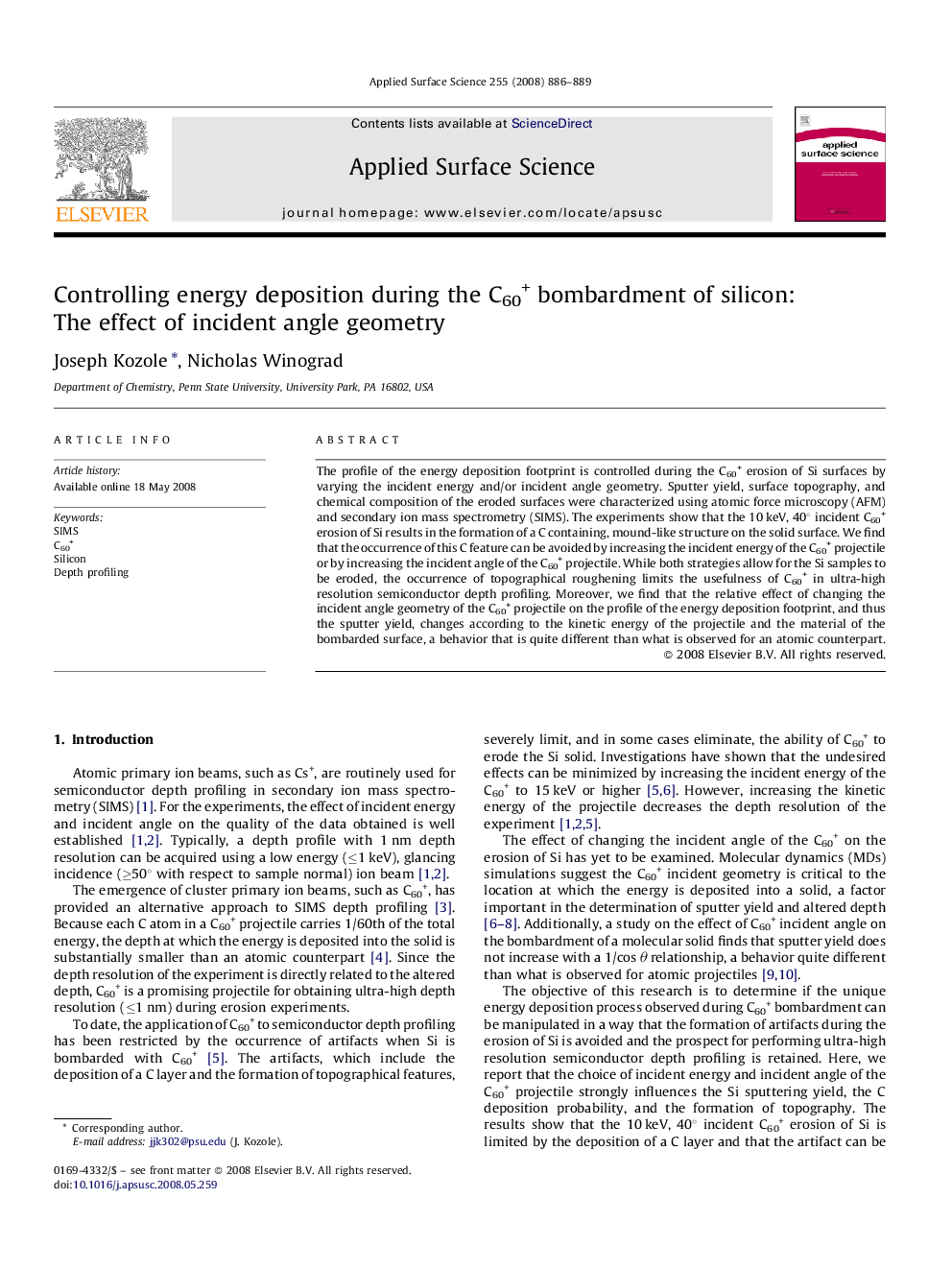| Article ID | Journal | Published Year | Pages | File Type |
|---|---|---|---|---|
| 5363533 | Applied Surface Science | 2008 | 4 Pages |
Abstract
The profile of the energy deposition footprint is controlled during the C60+ erosion of Si surfaces by varying the incident energy and/or incident angle geometry. Sputter yield, surface topography, and chemical composition of the eroded surfaces were characterized using atomic force microscopy (AFM) and secondary ion mass spectrometry (SIMS). The experiments show that the 10 keV, 40° incident C60+ erosion of Si results in the formation of a C containing, mound-like structure on the solid surface. We find that the occurrence of this C feature can be avoided by increasing the incident energy of the C60+ projectile or by increasing the incident angle of the C60+ projectile. While both strategies allow for the Si samples to be eroded, the occurrence of topographical roughening limits the usefulness of C60+ in ultra-high resolution semiconductor depth profiling. Moreover, we find that the relative effect of changing the incident angle geometry of the C60+ projectile on the profile of the energy deposition footprint, and thus the sputter yield, changes according to the kinetic energy of the projectile and the material of the bombarded surface, a behavior that is quite different than what is observed for an atomic counterpart.
Keywords
Related Topics
Physical Sciences and Engineering
Chemistry
Physical and Theoretical Chemistry
Authors
Joseph Kozole, Nicholas Winograd,
